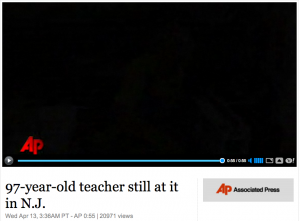
Cameras from the Raptor Resource Project made it possible for over 10 million viewers to witness three Decorah Eagles hatch in a nest 80 feet in the air all from the comfort of their computer chair. The videostream continues as the mother and father eagle care for their young and the fragile newborns get precariously close to the edge of the 1.5 ton nest.
The parents of these newborn birds have been together since the winter of 2007. They hatched 2 eaglets in 2008, 3 in 2009, and 3 more in 2010. If you you’re interested in knowing which is the male and which is the female, it’s easiest to decipher when they are in the nest together. The female is larger than the male, has a ridge around her eyes that runs further down her nose, and her eyes have a greyish shadow surrounding them.
The first hatch of 2011 was on April 2, the second on April 3, and the third on April 6. Click on the dates to watch the abridged videos of the hatching eaglets.
The Raptor Resource Project is a non-profit that specializes in preserving falcons, eagles, ospreys, hawks, and owls. You can catch the live stream 24/7 on www.ustream/tv/decoraheagles and participate in their live chat from 8am – 8pm daily.
Are you teaching your students about spring, birds of prey, family, wildlife or just need something different to show the class? Check out these videos and join in the live chat to ask experts your questions.
For more information on The Raptor Resource Project, visit www.raptorresource.org
Share this Article with Your Friends:















